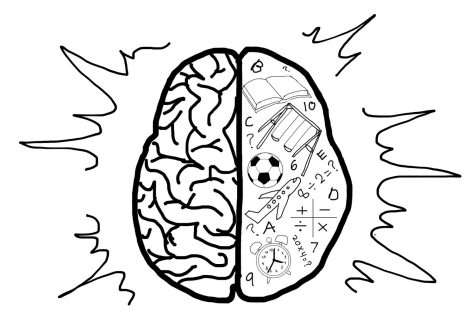The clock’s run out on not accommodating students
April 29, 2023
In 2019, 800,000 California students were given learning accommodations. There are two main programs for students to receive these accommodations, a 504 plan or an Individualized Education Plan (IEP). An IEP sets performance goals to address the specific needs of a student. As of 2020, 13 percent of California’s students were given IEPs. A 504 plan is created to protect a student and make sure they receive the accommodations they need. An IEP is much more specific and hands-on, while a 504 plan is more general and does not need to be updated annually. These plans are crucial to students’ education and must be respected.
A teacher once told me they did not know I had accommodations because I was doing fine in the class. It felt like they said students with accommodations couldn’t be doing well. This is completely untrue. Teachers need to work to understand students’ accommodations and listen to them. Under federal and state law, it is illegal for teachers to not provide a student with their accommodations, and yet some teachers still don’t. I have encountered teachers in middle and high school who are unresponsive or vague about how they will provide accommodations.

The University of Washington’s DO-IT Center for empowering people with disabilities explained that a student with a learning disability is no lesser than any other student.
“Students with specific learning disabilities have average to above average intelligence but may have difficulties acquiring and/or demonstrating knowledge and understanding content,” the DO-IT center said.
It is important to give students with learning disabilities accommodations to help them achieve the same results as students without disabilities. Accommodations work well when a child does not learn effectively in the traditional classroom environment. They can help students struggling in school because of a learning disability.
The Chicago Center for Teaching and Learning (CCT) at The University of Chicago explained that accommodations can be helpful for students.
“Classroom accommodations provide an opportunity for them to compete on equal terms with other students in class,” the CCT said.
For example, attention deficit hyperactivity disorder (ADHD) can cause students to be easily distracted. So students with ADHD might receive extra time on tests or take the test in a small group setting to reduce distractions. Since ADHD could disadvantage a student, getting these accommodations are important to even the playing field.
In 2017, the US Supreme Court decided that IEPs must be appropriate to the student’s needs, not just their grade. But is that enough? According to Dr. Roma Ziugzdaite, a co-author of a study from The University of Cambridge about learning difficulties, the education system labeling students as having a learning disability does not understand how and why they are struggling.
“Labeling difficulties is useful for practical reasons and can be helpful for parents, but the current system is too simple,” Ziugadaite said.
Just because a student has a diagnosis does not mean a teacher knows what educational difficulties they may have. This makes it very hard for teachers to accommodate students. There are many different symptoms of a student with ADHD, including being unable to focus on tasks and fidgeting. However, there tends to be a basic set of accommodations given out to many students; these accommodations do not always get to the root of the problem. It must be made clear what students need, not just what box they are put in. Every student is different, so the way teachers accommodate them has to be much more personalized than it is now.
Some believe it is unfair for only a few students to receive accommodations, such as extra time on a test. Others believe that students with learning disabilities should not take an Honors or Advanced Placement (AP) class if they cannot take the test in the given amount of time. These ideas stem from a lack of understanding about accommodations. Some students and teachers don’t understand why other students get to have these “privileges” because they don’t understand the way learning disabilities work. Giving an IEP or 504 plan to students with learning disabilities does not set them ahead of the other students. Many students with learning disabilities are perfectly capable of taking an AP or honors class when given proper accommodations.
Teachers and students alike need to understand how crucial students’ accommodations are and listen to them. With IEP and 504 plans, students with learning disabilities are able to thrive.























